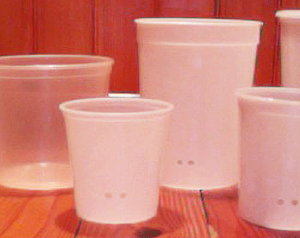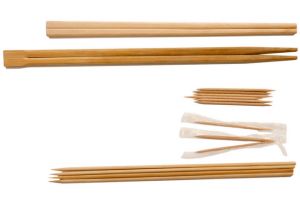› Forums › Beginners learning › How should I water my orchids?
- This topic is empty.
-
AuthorPosts
-
July 8, 2014 at 9:24 am #14790
La Casa
KeymasterIf you often wonder: how should I water my Phalaenopsis? How much water should I give my Dendrobium? How often should I water my orchids? This article is what you need!!
When we talk about the adequate watering for our orchids, we have good and bad news. The bad news is that there is no one-rule-fits-all!!
But the good news is we have some tricks that will help you know when and how much water you should give your orchid. Once you know these tricks you won’t be guessing and worrying on your next waterings.
First of all, we need to understand that there are several factors that come into play when we drown or dehydrate our orchids.
Factors to determine your watering routine:
1. ORCHID TYPE:
Naturally, different species need different waterings. First you need to identify what specie, ate least what genus, you’re dealing with. In general, Miltonia, Phalaenopsis and Paphiopedilum enjoy constant humid conditions; whilst Cattleya and Dendrobium prefer to be almost dry before their next watering.
If you’re not sure about what type of orchid you have, please upload a picture of it in our forum and we’ll do our best to help yu identify it!! This is the link: http://www.lacasadelasorquideas.com/foro/what-species-to-i-have/
2. WHAT’S YOUR POT MADE OF:

Water evaporates faster from clay pots than from plastic or glass pots. Keeping this in mind, orchids planted in clay pots need more water than one of the same species plantes in a plastic pot, and even more than those planted in glass vases without drainage.
Never plant your orchid in a decorative pot!! The chemicals of the paint and coating can poison the roots. Plant them in a plastic pot and then place this plastic pot inside the decorative one.
Choose the type of material that best suits your lifestyle: if you only want to dedicate a few minutes a week to your orchids, choose plastic!!
Also, consider your weather conditions: if you live in a very humid zone, a clay pot is perfect. If your area is very dry, we recommend you choose plastic or glass to preserve the humidity longer.
3. WHAT TYPE OF MEDIA ARE YOU GROWING IN:
This factor is more important than the type of pot. For example, Sphagnum moss takes longer to dry than bark; organic media in general takes longer to dry than inorganic media, such as LECA or perlite.
Therefore, an orchid potted in a mix of growing media where the main ingredient is moss, should be watered less frequently than an orchid potted in perlite.

So, you need to observe how long it takes (days) for your media to dry and this way you won’t be overwatering and you can start to determine your watering routine.
4. YOUR ENVIRONMENT:
Your orchid’s roots and your media will dry up faster if:
- it’s hot, the temperature is high
- the light is very bright, summer days with more sun hours
- relative humidity is low, the air feels dry
We must consider the environmental changes according to the season. In general, your orchids will require more abundant and frequent waterings during hot summer days than they will throughout the cold winter months.
Stop for a moment and observe your environmental conditions!! Is it hot, dry and there is strong light? Or is it warm, humid and not so bright?
A tip to help you determine your orchid’s needs is to compare them with yours: are you constantly drinking water and seeking for a shadowy place to cool down? Does your nose feel dry inside because the air is dry or are you sweating because the humidity around you is high? Are you cold and not that thirsty? Are you looking for a ray of sun to heat up? The same thing happens with your orchids!!

Once you’ve checked these 4 factors you surely have an idea of what your orchids need!! Understanding these factor is important, but knowing when to water shouldn’t be a mystery!! How to know if it’s time to water or not yet?
7 RULES OF WATERING:
1.- the media must never feel wet or soggy
2.- the media should never be super dry, dehydrated
3.- smaller pots (4″ diameter) need more frequent waterings than bigger pots (6″+ diameter): the smaller will dry faster.
4.- orchid roots and media in pot clays will dry faster than in plastic pots or glass vases
5.- always use temperate water, never cold or hot: please do not use ice cubes!!
6.- always water over the media, never over the plant. If your orchid has a crown, like Phalaenopsis do, it’s important that it doesn’t get wet; if a deposit forms in the crown, you should dry it out with a clean cloth, cotton or a Qtip to avoid crown rot.
7.- and when in doubt, it’s better to skip the watering for a couple of days!! The main cause of death is overwatering!!
2 TIPS TO KNOW IF IT’S TIME TO WATER:
 1.- when your plant is dry. pick up the pot and try to make a mental note of it’s weight. Water it abundantly until the media is saturated and then pick it up again and make a second mental note of it’s weight.
1.- when your plant is dry. pick up the pot and try to make a mental note of it’s weight. Water it abundantly until the media is saturated and then pick it up again and make a second mental note of it’s weight.In the next days, you’ll notice the pot is loosing weight. It will get lighter as the water is being absorbed by the plant and is evaporating from the pot. With some practice, you’ll get to know if’s time to water just by picking up the pot.

2.- get some wooden skewers or chopsticks. Just as if you were checking the cooking of a cake, gently stick a skewer or chopstick in the center of the pot, slowly to avoid hurting the roots; leave it there for a couple of minutes and take it out. Touch it. How does it feel?
If it’s cold and humid to the touch, it means that the media is still wet. You should wait a few days to water your plants.
If it’s almost dry or dry, then it’s time to water again!!
Remember that most orchids in nature grow with their roots out in the open, so even if they are getting waterings everyday from continuos rains in the tropical forests, the roots are exposed to the wind that helps them dry out. They love high RH levels, but they don’t like to stay wet.
Organic media, like bark or moss, will remain wet longer and they will eventually decompose. If you keep them wet, they’ll go bad faster, rotting and therefore rotting the roots of your orchid.
If you have doubts about growing media, we recommend the semi hydroponic growing method. But don’t change your orchids from your current growing media or method to a new one (unless is necessary because of disease), until you have new root growths. The orchid should have 3 or 4 new roots about 1.5″ long (each), that will be able to adapt to the new conditions. Old roots will probably won’t adapt and may die; this is ok as long as you have new roots that will help your orchid.
Once you’ve determine the frequency of your waterings, you’ll catch yourself doing it automatically!! This means that you won’t have to go through all the steps each time you water. For example, we grow our orchids in SH with LECA, we water them once a week in the morning, with warm water. We fertilize with 3 of 4 waterings a month. During the colder months, we space the waterings to every 10 days and we increase the lightning (some direct sunrise light) and the ventilation. During the hotter months, we let them soak for 10 or 15 minutes, to make sure they are well hydrated; if it’s really hot, we make sure to refill the water reservoir between waterings and we increase the RH if necessary. (Tips to increase RH)
-
AuthorPosts
- You must be logged in to reply to this topic.
